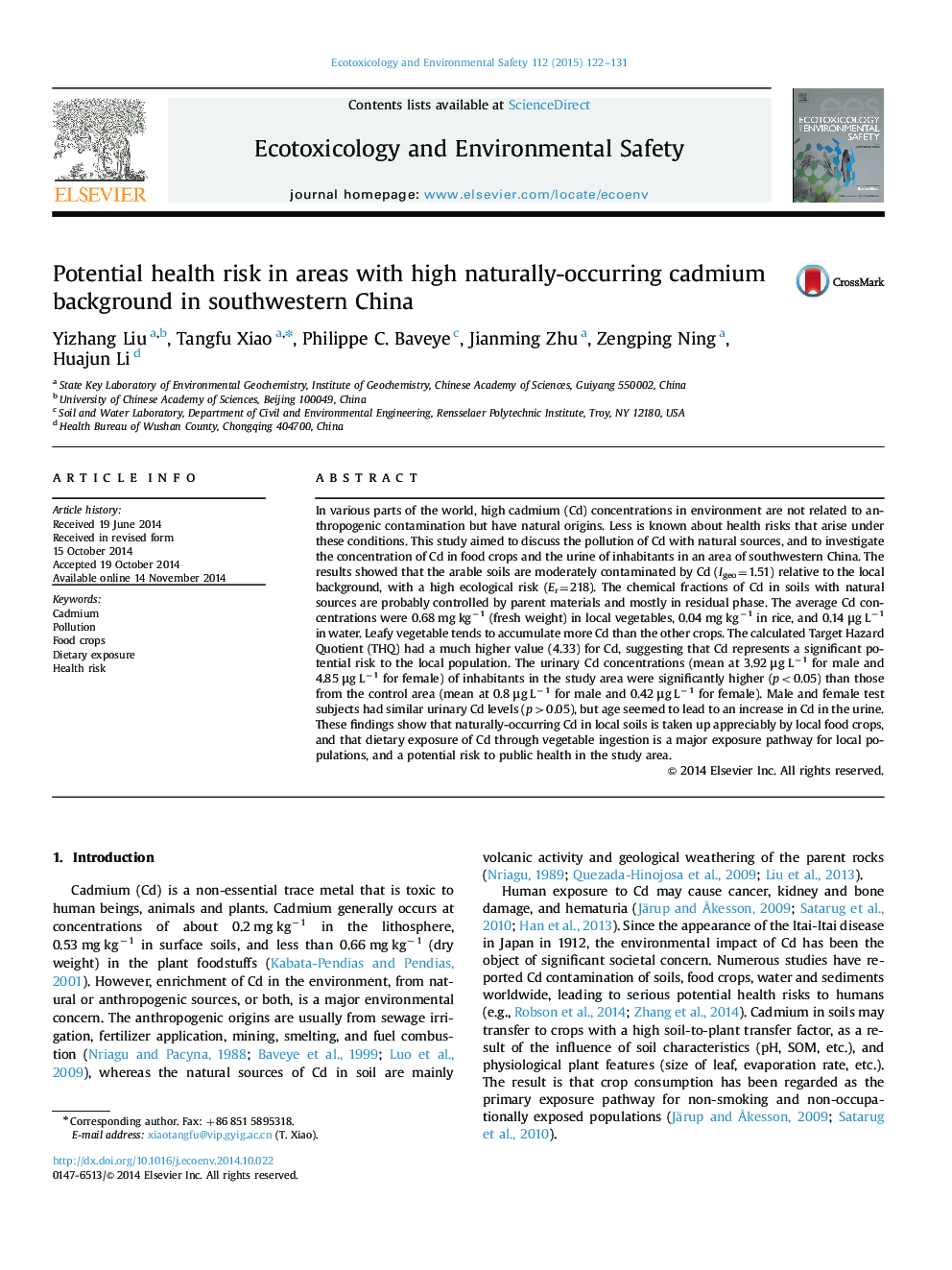| Article ID | Journal | Published Year | Pages | File Type |
|---|---|---|---|---|
| 4419794 | Ecotoxicology and Environmental Safety | 2015 | 10 Pages |
•Naturally-occurring cadmium contamination in a presented area was reported.•Daily cadmium intake of local population was estimated.•The major exposure path of Cd for residents was intake of local vegetables.•Urinary Cd analysis indicated health risk of Cd to local inhabitants.
In various parts of the world, high cadmium (Cd) concentrations in environment are not related to anthropogenic contamination but have natural origins. Less is known about health risks that arise under these conditions. This study aimed to discuss the pollution of Cd with natural sources, and to investigate the concentration of Cd in food crops and the urine of inhabitants in an area of southwestern China. The results showed that the arable soils are moderately contaminated by Cd (Igeo=1.51) relative to the local background, with a high ecological risk (Er=218). The chemical fractions of Cd in soils with natural sources are probably controlled by parent materials and mostly in residual phase. The average Cd concentrations were 0.68 mg kg−1 (fresh weight) in local vegetables, 0.04 mg kg−1 in rice, and 0.14 μg L−1 in water. Leafy vegetable tends to accumulate more Cd than the other crops. The calculated Target Hazard Quotient (THQ) had a much higher value (4.33) for Cd, suggesting that Cd represents a significant potential risk to the local population. The urinary Cd concentrations (mean at 3.92 μg L−1 for male and 4.85 μg L−1 for female) of inhabitants in the study area were significantly higher (p<0.05) than those from the control area (mean at 0.8 μg L−1 for male and 0.42 μg L−1 for female). Male and female test subjects had similar urinary Cd levels (p>0.05), but age seemed to lead to an increase in Cd in the urine. These findings show that naturally-occurring Cd in local soils is taken up appreciably by local food crops, and that dietary exposure of Cd through vegetable ingestion is a major exposure pathway for local populations, and a potential risk to public health in the study area.
